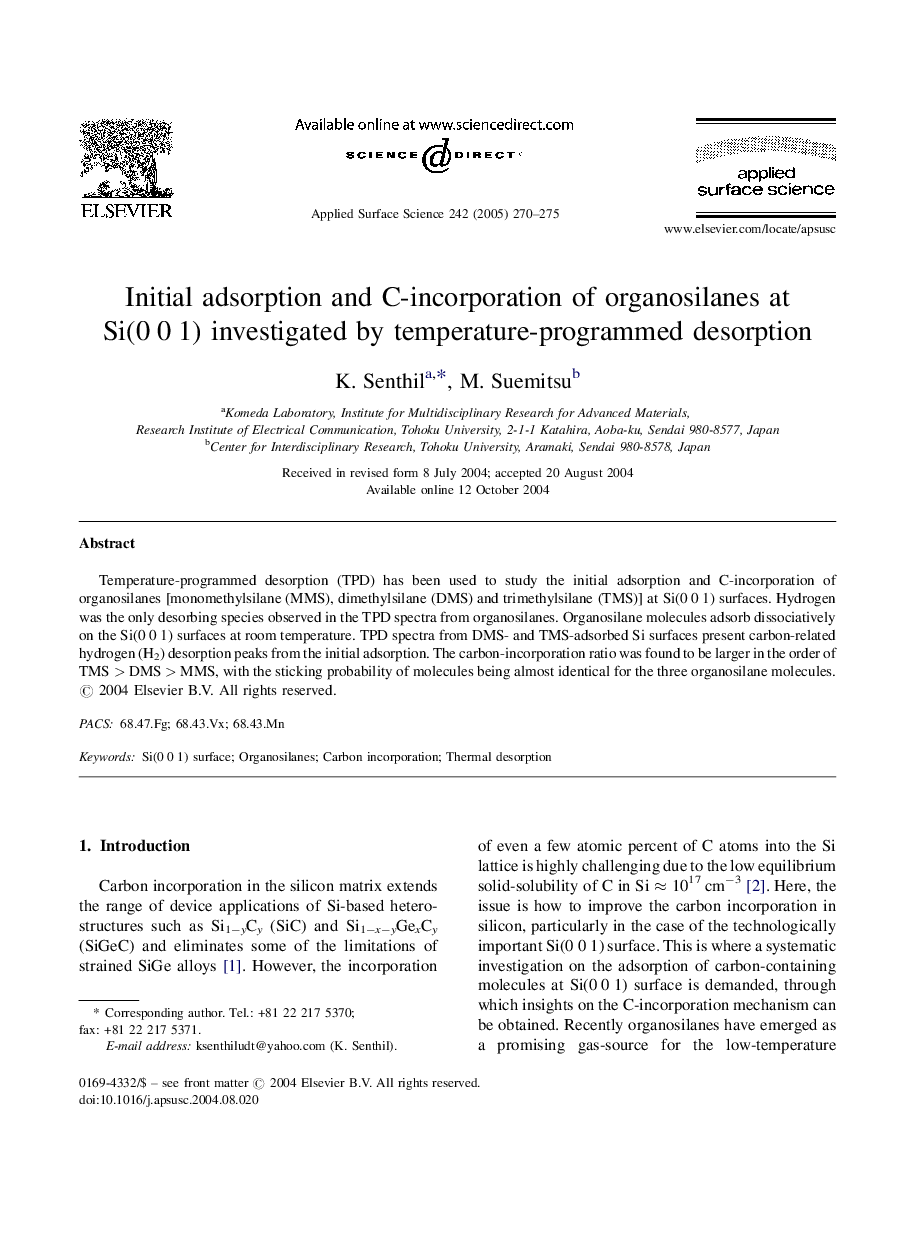| Article ID | Journal | Published Year | Pages | File Type |
|---|---|---|---|---|
| 9572487 | Applied Surface Science | 2005 | 6 Pages |
Abstract
Temperature-programmed desorption (TPD) has been used to study the initial adsorption and C-incorporation of organosilanes [monomethylsilane (MMS), dimethylsilane (DMS) and trimethylsilane (TMS)] at Si(0Â 0Â 1) surfaces. Hydrogen was the only desorbing species observed in the TPD spectra from organosilanes. Organosilane molecules adsorb dissociatively on the Si(0Â 0Â 1) surfaces at room temperature. TPD spectra from DMS- and TMS-adsorbed Si surfaces present carbon-related hydrogen (H2) desorption peaks from the initial adsorption. The carbon-incorporation ratio was found to be larger in the order of TMS > DMS > MMS, with the sticking probability of molecules being almost identical for the three organosilane molecules.
Keywords
Related Topics
Physical Sciences and Engineering
Chemistry
Physical and Theoretical Chemistry
Authors
K. Senthil, M. Suemitsu,
